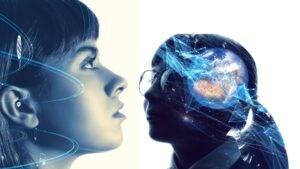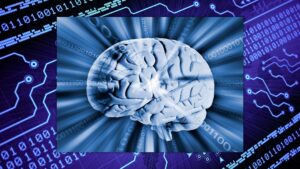Sleep Simulation
What if I told you that in the future, you could choose how long you wanted to sleep? And not only that, but you could also choose what kind of sleep you wanted! Wouldn’t that be amazing?
We currently sleep almost 8 hours a day, and it is necessary. According to the National Sleep Foundation, more than one-third of Americans don’t get the recommended seven to nine hours of sleep each night.
There are many reasons why we don’t get enough sleep. We live in a fast-paced, 24/7 world where we are constantly connected to technology. This can make it difficult to wind down at night and get the restful sleep we need.
But what if we could customize the necessity with tech? A device that makes us, and our bodies feel like we have slept for 8 hours, in just 2 hours. The theory of sleep simulation: The idea is that instead of sleeping for 8 hours a day, we could sleep for less time if we could customize our sleep with technology.
In the future, it is possible that we will be able to use technology to customize our sleep and get the same benefits as 8 hours of sleep. We would do this by using a combination of light, sound, and other stimuli to simulate the sleep cycle. For example, the use of auditory stimulation has already shown promise in improving age-related decreases in slow-wave, deep-sleep brain oscillations that are essential for sleep restoration.
Some implications of reduced sleep necessity include:
1. We would be more productive
If we didn’t need to sleep as much, we would have more hours in the day to be productive. We could get more work done, or we could use that extra time to pursue our hobbies and interests.
2. In a sense, the average lifespan of mankind would increase significantly
Sleeping is a big part of our lives, and it’s no secret that the less we sleep, the shorter our lifespan would be. But if we could find a way to reduce the amount of sleep we need, it would stand to reason that our lifespans would increase as a result.
3. We would be able to get more done in a day
With sleep simulation reducing sleep time, we would be able to get a lot more done in a day. We could work longer hours and get more done at work or school. We would also be able to spend more time doing the things we enjoy. The productivity of mankind, overall, will increase with reduced sleep necessity.
4. We would be able to learn more
If we didn’t need to sleep, we would be able to learn more. We could take more classes, read more books, and gain more knowledge. We would also be able to retain information better and have a better understanding of the world around us.
5. Innovations will just increase
If we could find a way to reduce our need for sleep, it would open up a world of possibilities for further innovation. We would have more time to devote to work, relationships, and to leisure pursuits. Then we would be able to accomplish more in a day, and potentially learn more and faster as well.
6. We would have more time for socializing
Currently, amid the phase of the age of technology where tech is doing more harm than good, we are dedicating our most valuable asset, time, to our smartphones. If we had to sleep less, we would have more time to socialize with our friends and family. We could go out more, or we could just spend more time talking to the people we love.
How could we reduce our sleep necessity?
There are a number of ways this could be done. For example, we could use technology to stimulate the release of sleep-inducing hormones like melatonin. We could also use technology to help us stay awake for longer periods of time.
Of course, there are potential risks associated with using such technology to reduce our sleep necessities. For instance, we could become so reliant on technology that we no longer know how to function without it. We could also become sleep-deprived and experience negative health consequences as a result.
But if used responsibly, technology could help us get the sleep we need without having to sacrifice our busy lifestyles. So instead of using technology to keep us up at night, what if we use it to help us get a good short night’s sleep?
What kind of device?
The sleep-simulating device would work by stimulating the parts of the brain that are responsible for sleep. It would send signals that would fool the brain into thinking that the body has had a full night’s rest, even if it has only been asleep for a couple of hours. This would allow people to get the benefits of a full night’s sleep without having to sacrifice their time.
There are a few challenges to this technology. First, it would need to be able to accurately mimic the brain’s sleep patterns. Second, it would need to be safe. There’s no point in reducing our sleep necessity if it comes at the expense of our health. But if we could overcome these challenges, the benefits would be tremendous.
Not only would this technology reduce the amount of time we need to sleep, but it would also improve the quality of our sleep. Because the device would be stimulating the parts of the brain responsible for sleep, we would be getting more restful, deep sleep. This would lead to improved concentration, productivity, and overall health.
So if you’re looking for a way to get more out of your day, and get a good night’s sleep, this technology may be for you.
Another possibility is a device that uses low-level electrical stimulation to target specific areas of the brain associated with sleep. This stimulation would mimic the slow, steady waves of brain activity that occur during natural sleep.
You would need to wear the device for a few hours before bed, and it would gradually help the user fall asleep. Once the user was asleep, the device would continue to work to keep them in a deep, restful sleep. When the user woke up, they would feel well-rested and would not need to sleep for several more hours.
Ways for sleep improvements to be used for sleep simulation?
-Light therapy. Researchers have shown light therapy to be effective in treating a variety of conditions, including insomnia. By exposing the body to certain wavelengths of light, we can help to regulate our sleep-wake cycle and promote a sense of relaxation.
-Certain sounds can help to lull the body into a deep state of relaxation. Sound therapy can be particularly effective if the sounds are played at a low frequency, as this can help to slow down the brain waves.
–Scent therapy. Certain essential oils have been shown to have a calming effect on the body and mind. By diffusing these oils into the air, we can create a relaxing environment that can help to induce sleep.
Ways like light therapy, scent therapy, and sound therapy can be used for sleep stimulation. Different colors of light can have an effect on our mood and how alert we feel. Scent therapy can also be used to help us relax and feel sleepy. Sound therapy can be used to help us fall asleep and stay asleep. All of these methods play a part to help to stimulate our sleep and helping us feel rested. It would not be a standalone technique but could play a commendable role in making sleep simulation possible.
Simulating sleep: Brain and Body
Sleep helps our bodies to recover from the day, and allows our brains to rest and rejuvenate. When you don’t get enough sleep, these essential functions are interrupted, which has an impact on your mood, energy levels, thinking, and concentration.
As we can see, sleep is more about our brain getting rest, more than our bodies. Maybe not as much as the brain, but our body needs rest too, and that’s for certain.
It’s difficult to trick our body into thinking it has slept when it hasn’t. You might be considering sleeping in a floating tank. But while all-night floats can be extremely beneficial, they are not a viable substitute for natural sleep.
One way to make our body feel like it has gotten enough sleep would be with the help of electromagnetism. Yes, floating beds are already here, but unrelatable. We will not be sleeping in bed. Instead, we will be suspended in mid-air, and the magnetic force will allow us to get a deeper and more restful sleep.
There are a few potential drawbacks to this technology, as well. First, it could be expensive to implement. Second, there could be some safety concerns. It is also possible that the magnetic field could have some negative effects on our health.
Now, “it’s 2034”, and there is a new technology that can do just that! You can place this device called the “Sleepioo” on your bed while you sleep. Yes, you can make the bed entirely out of it, too. It will send out gentle vibrations that will make your body feel like it has slept for eight hours, even if you’ve only slept for two.
There is also a possibility of devices that we can wear on the body that emit vibrations. These vibrations can help to promote a feeling of deeper relaxation and can also help to get more sleep with less sleep.
Sleep Timing?
In a world where we only need to sleep 2 hours a day, we could sleep anywhere between 12 AM to 3 AM. According to scientific evidence, waking up after 12 AM is harmful to our health. So, the best sleep time in such circumstances, if we could reduce our sleep necessity to 2 hours, would be from Midnight to 3 AM.
We often think of AI when it comes to increasing lifespan. Sleep simulation is far more feasible but extremely underrated.
- AI-Powered PCs: Overhyped Trend or Emerging Reality? - August 21, 2024
- Princeton’s AI revolutionizes fusion reactor performance - August 7, 2024
- Large language models could revolutionize finance sector within two years - March 27, 2024



